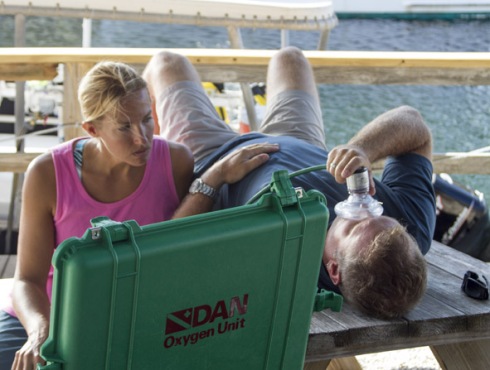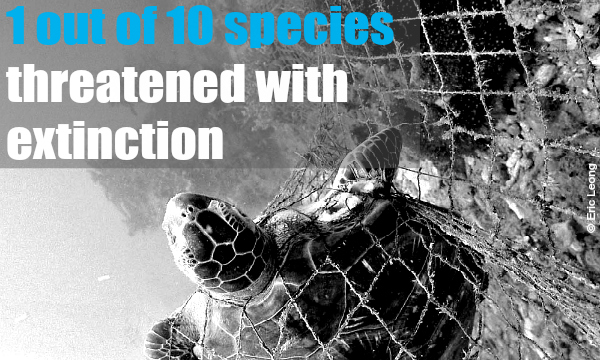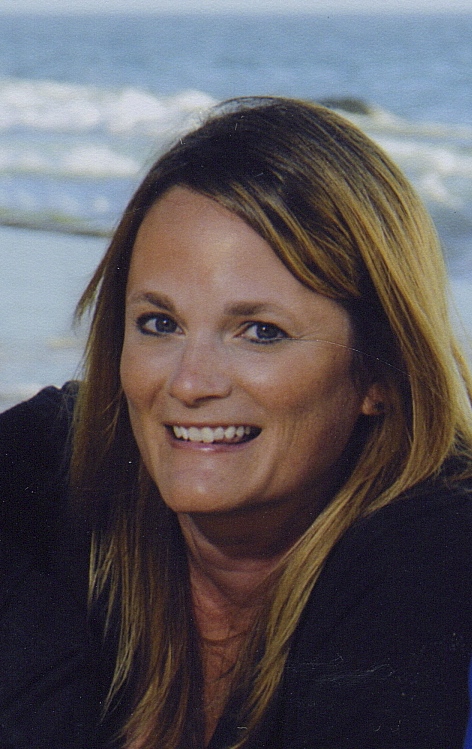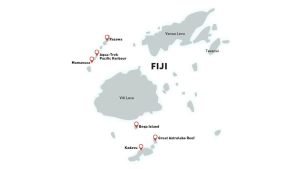Bula mai Kubulau, Fiji!
Over the years, we have partnered with the Wildlife Conservation Society to build local capacity to effectively manage the Namena Marine Reserve within a larger ecosystem based management plan.
The Namena Marine Reserve continues to be an exemplary program for how local management can benefit both communities and coral reefs.
.
.
#savecoralreefs #ocean #oceanconservation #corals #coralreefs #oceanlife#underwaterphotography #underwater #marinelife #conservation
Fiji | Coral Reef Alliance | Coral Reef Alliance:
A blog about the great scuba diving around Fiji. Some of the highlights of living and working in Fiji is the diving on the soft coral reefs with sharks, mantas and teeming life on the reefs.
Friday, 30 December 2016
Tuesday, 20 September 2016
PADI Insurance Applications Now Available in Fiji
|
|||
|
|||
|
'via Blog this'
Wednesday, 7 September 2016
DAN Asia-Pacific Safety Tip: In-Water Recompression
Written by John Lippmann Founder & Chairman DAN Asia-Pacific
In-water recompression (IWR) has been used in one form or another for many decades as a means of trying to eliminate symptoms of decompression sickness (DCS). Historically, it was predominantly used by diver fisherman in places where there was no access to recompression chambers or suitable medical care.

Protocols varied, but it often involved descending to depth (often 30-50 m) breathing air. The reality was that it was fraught with risk for both the diver and his buddies and there are many anecdotes of poor and sometimes tragic results.
In an effort to reduce the depth required for IWR, several organisations introduced IWR protocols which used oxygen, rather than air, as the breathing gas. Possibly the best known procedure was that introduced by Dr Carl Edmonds, of the Australian Navy School of Underwater Medicine.
The treatments involve the injured diver re-submerging to a specified depth (usually 6-9 m) for scheduled times breathing 100% oxygen. However, the breathing of oxygen can cause seizures at these pressures so, to mitigate the risk of drowning in the event of a seizure underwater, the diver is advised to wear a full face mask. In the Edmond’s procedure, the diver is also tethered to a shotline marked in 1 metre increments to control the depth and later the ascent rate (which is 1m / 12 minutes). There needs to be an underwater attendant with the diver and one on the boat. The sea and weather conditions need to be suitable and the diver needs to be wearing an appropriate wetsuit or drysuit to ensure that he/she doesn’t get cold during the several hours underwater. The treatment time ranges from about 2 to 3.5 hours.
With the emergence of technical diving, the breathing of high oxygen concentrations underwater has become commonplace; as has diving in more remote locations. The availability of rebreathers enables oxygen-breathing for extended periods. As a result, there are an ever-increasing number of anecdotal reports of divers with symptoms of DCS treating themselves using IWR on oxygen (IWOR). If done in a reasonable fashion, this is often successful. However, the reality is that it is often done in a relatively haphazard manner, increasing the risk of a problem.
Over recent months, DAN AP has received two concerning reports involving IWOR. The first involved a technical diver who was diving in Indonesia. He developed mild symptoms of DCS after diving and decided to do a shallow dive on his rebreather on a high PPO2 to try to resolve them. Although the symptoms receded for a while, they worsened again that evening. After searching the web he found some IWOR procedure on a chatline and dived again the next day, trying to treat his symptoms. Unfortunately, they became far worse and he further compounded them by flying home.
The second diver developed symptoms of decompression illness after diving from a ’liveaboard’ in the Philippines. He was unconscious for a short time. The dive crew called the DAN AP Diving Emergency Service (DES) hotline and was linked to an experienced diving doctor. The operator indicated that its protocol was to use IWOR and asked the doctor for advice. The doctor advised that the diver should NOT be put in the water due to his unstable condition and that he should remain on the boat and breathe oxygen for several hours while arrangements could be made for further management. The diver improved significantly with the oxygen first aid, but, despite this and against the medical advice, the dive operator insisted that the diver do IWOR. Had he become unconscious whilst underwater it could have ended in a fatality and the dive operator’s position would likely be indefensible given that they had acted contrary to expert medical advice.

It is not the role of a dive professional to make what is essentially a medical decision to perform IWOR on a client. Unless they are particularly well-informed, the client would not be in a position to assess the potential risks and balance them against the possible advantages. This is also true of the dive professional.
I believe that IWOR has its place in the management of DCS in remote places. However, it must be done using acceptable protocols, with appropriate equipment, in appropriate conditions and only on a diver who is conscious and stable. Expert diving medical advice should be sought and followed.
Dive operators and divers should not underestimate the effectiveness of properly delivered surface oxygen first aid. If given early, in high enough concentrations and for long enough (often 4-6 hours), oxygen first aid will often reduce or eliminate symptoms of DCI. It is essential that there is an adequate oxygen supply that will last until medical aid is available, or until a diving doctor advises that it can be ceased.
DAN Asia-Pacific Safety Tip: In-Water Recompression | PADI Pros Oceania:
'via Blog this'
Saturday, 30 July 2016
Stand with us to protect what you love! Project AWARE

Have you ever heard a success story of a diver freeing a turtle, dolphin, shark or even a whale entangled in fishing nets or other debris?
These life-saving actions never fail to amaze me.
Many of these stories have a happy ending. But sadly, not all of them do. As divers, we're sometimes at the right place at the right time and we can’t help but try to rescue these straggling, innocent creatures.
However, despite these heroic efforts marine life in the thousands are affected by pollution that we produce on a daily basis.
Would you invest in prevention and help Project AWARE stop our trash from needlessly killing marine life?
Last year, the scuba diving community helped Project AWARE:
- Highlight to world leaders the devastating impacts of marine debris and emphasize the urgent need for solutions at the Our Ocean Conference.
- Fight to protect threatened sharks and rays and strengthen shark finning bans in the Atlantic and Indian Ocean.
- Secure a mandate for safe release of manta and devil rays caught in the tuna fisheries of the Eastern Pacific.
We need the full weight of the diver community behind us right now. Can we count on you?
Thank you for doing your part to protect our ocean and marine life for future generations.

Tiffany Leite,
Director, Global Operations
Project AWARE Foundation
Thursday, 2 June 2016
8 of the Best Places to Dive in Fiji: Part 2
"Last week, Jon M. Piepkorn, Clare Caroline Brown and Stuart Gow showcased the first part of our two-part feature on the eight best places to dive in Fiji. Here they bring you the much anticipated final four:
The islands of Fiji, which I can proudly state have some of the best diving in the world, are one of a kind. To sports enthusiasts, the Pacific nation is rugby sevens; to topside adventurers, it is its unique traditions and heritage; but to divers, Fiji is a vast unchartered underwater haven, teeming with unique forms of marine life that are yet to be explored. Here are the final four:
"

8 of the Best Places to Dive in Fiji: Part 2:
The islands of Fiji, which I can proudly state have some of the best diving in the world, are one of a kind. To sports enthusiasts, the Pacific nation is rugby sevens; to topside adventurers, it is its unique traditions and heritage; but to divers, Fiji is a vast unchartered underwater haven, teeming with unique forms of marine life that are yet to be explored. Here are the final four:
"

8 of the Best Places to Dive in Fiji: Part 2:
Monday, 30 May 2016
Divers swim with giants of the deep - Fiji Times Online
DIVERS with KoroSun Dive in Savusavu had the rare good fortune of encountering a whale shark earlier this week on a dive at the famous Dream House site.
The approximately 25 foot long whale shark swam lazily between divers for about 15 minutes.
KoroSun Dive owner and operator Colin Skipper said it was the first time in more than 40 years of diving to see a whale shark.
One of the divers, Amy Savage, said they were headed out of the blue when they spotted a spot in the sea start to turn white.
Divers swim with giants of the deep - Fiji Times Online: Thursday, 26 May 2016
8 of the Best Places to Dive in Fiji: Part 1
Jon M. Piepkorn, Clare Caroline Brown and Stuart Gow showcase the best places to dive in Fiji. We are bringing you this extraordinary feature in two parts over the week – starting with the Pacific nation’s first four top dive sites!
Fiji has some of the best diving in the world, so naming and choosing the eight best places to dive is nothing if not a challenge. In the following two-part feature, we split up the island country by region, and by experience level:

"During one dive, a diver can come face to face with up to eight different species of sharks (tiger, bull, lemon, blacktip, whitetip, grey reef, leopard and tawny nurse), and nearly 300 species of fish." © Heather Sutton
John M. Piepkorn - Born and raised in Minnesota, U.S.A., Jon is a PADI IDCSI who currently lives in Fiji.
8 of the Best Places to Dive in Fiji: Part 1
Saturday, 21 May 2016
Paradise, Fiji Style - The Nomadic Tribes Travel Blog
DESCEND INTO THE SOFT CORAL CAPITAL OF THE WORLD
Paradise, Fiji style. Long hailed by scuba divers as being the “Soft Coral Capital of the World”, Fiji offers tantalizing diving opportunities that will mesmerize even the most jaded dive traveler. Straddling the International Date Line, Fiji is comprised of roughly 300 islands and atolls sprinkled across 200,000 square miles of the South Pacific Ocean. Fiji’s rainbow reefs are renowned for their wonderfully pristine flowery soft corals, large branching fan corals, schooling pelagics, dazzling tropical fish, towering coral bommies, barrier reefs, precipitous drop-offs and offshore pinnacles. A vast number of these incredibly exotic reefs still remain largely unexplored. When compared to other exotic dive destinations, another of Fiji’s great virtues is that it only takes 12 hours to get there from North America’s West Coast.
Paradise, Fiji Style - The Nomadic Tribes Travel Blog:
The Fiji Siren is back operating and diving in Fiji - DiveNewswire
On the morning of February 20, Fiji encountered the most powerful cyclone in the Pacific nation’s recorded history.
Thanks to the bravery of the captain and crew on board and the following hard work of the Fiji Siren crew and the Siren family ground support, the Fiji Siren is now back in action. Cruises diving the Soft Coral Capital of the World started again on the 14th of April!
Since the cyclone, all the dive shops around Fiji have been checking the reefs in their area and everybody is happy to discover that most of the reefs haven’t been damaged or, if they have, then only suffering minor damage. The feedback from the first trip was kind of great too! Mantas on almost every dive, plenty of sharks, beautiful corals with plenty of macro life and schooling of fish!
• Midway: This area is almost unharmed and the underwater life keeps swimming around the sea fans and hard corals as if nothing has happened: nudibranch, lizard fish, starfish, spotted eagle ray and countless schooling pelagics’ such as blue fin trevally, jacks and barracuda are all still in attendance.
• Vatu I Ra Passage: This area has no damage and you wouldn’t know a massive storm had recently passed by! The soft corals are out en mass, as are the fish life with black tip, white tip and grey reef sharks, huge schools of giant trevally, jacks, unicorn fish and groupers all cruising around.
• Vatu Lacu: The healthy reefs and prolific fish life are everywhere! Lots of sharks, plenty of nudibranch, cheeky blennies, everyone’s favorite Nemo and of course our trademark anthea’s in schools way too big to count.
• Tavenui: Most of the area is just as before! The hard corals, soft corals, giant trevally, whitetip reef sharks, pipefish, nudibranchs, garden eels, schooling fusiliers, unicornfish, schools of fish are in full bloom in all colours of the rainbow!
• Beqa Lagoon: The entire Coral Coast between Nadi and Suva including Pacific Harbour were relatively unaffected by the cyclone. There was only minimal damage and the bull sharks are already missing you!!!!
The Fiji Siren offers affordable luxury liveaboards in Fiji all year round with a choice of 7 or 10 night itineraries, with 4 guided dives per day in small groups. All this surrounded by their professional, experienced and friendly crew.
The vessel features a/c cabins with en-suite facilities and plenty of space for you to relax and enjoy your time onboard, as well as, a dedicated camera set-up and charging station with plenty of additional storage for all your extra lenses, strobes and batteries. It is thoughtful touches such as these that make Siren Fleet the best choice for both professional and amateur photographers. The Fiji Siren offers free essential scuba equipment rental and free Nitrox.
The vessel features a/c cabins with en-suite facilities and plenty of space for you to relax and enjoy your time onboard, as well as, a dedicated camera set-up and charging station with plenty of additional storage for all your extra lenses, strobes and batteries. It is thoughtful touches such as these that make Siren Fleet the best choice for both professional and amateur photographers. The Fiji Siren offers free essential scuba equipment rental and free Nitrox.
Would you like to support this country of happy and welcoming people, then choose Fiji on board the Fiji Siren! 10% of the value of all Fiji bookings made in April and May 2016 will go to help the people in Fiji, through their campaign with Sea Save to rebuild homes and lives. Sea Save will redistribute the money directly to the people in need!
Contact us today!
Email: info@sirenfleet.com • website: www.sirenfleet.com
Email: info@sirenfleet.com • website: www.sirenfleet.com
The Fiji Siren is back operating and diving in Fiji
Friday, 22 January 2016
As 2016 begins, Calypso will be getting a whole new life!
As 2016 begins, Calypso will be getting a whole new life, 20 years after its accident in Singapore!
After having explored the possibility of a future for Captain Cousteau’s iconic ship in Monaco, a different solution has finally been found to save Calypso.
Francine Cousteau, president of the organizations he created, has been fighting to save the vessel for the last 20 years.
The Cousteau Society bought the ship from Loel Guinness in order for it to be a living representative of ecology sailing the oceans of the world.
 |
| As 2016 begins, Calypso will be getting a whole new life |
Thousands of fans from around the world have brought their moral support to The Cousteau Society for the full refurbishment of Calypso. The considerable costs entailed by this project have, on too many occasions over the last 20 years, prevented this goal from being achieved.
Finally, The Cousteau Society has managed to gather a group of generous and highly motivated international sponsors, whose objectives are compatible with those of the Cousteau Society.
At the end of the first trimester of 2016 Calypso will be able to leave the Concarneau’s shipyard, to begin its new life.
In addition to the historic hull and ship equipment, Calypso will be fitted with two Volvo Marine motors, which were bought in 2009.
Francine Cousteau adds that « When Calypso will return to the Mediterranean, she will be seaworthy and powered by her own two motors, as was Captain Cousteau’s wish. I am extremely happy to announce this great news, after a 20 year long struggle against adversity and various mishaps. I am grateful to those who have helped us, and I invite all of those who share our joy today to join us. »
Information regarding the evolution of the Calypso’s situation will be regularly posted on our website:
Calypso set to sail again!Cousteau Society
Thursday, 7 January 2016
FHTA joins 4FJ campaign to stop serving kawakawa and donu for the next three months
THE latest advocate of the 4FJ campaign is the Fiji Hotel and Tourism Association which is encouraging more than 250 of its members to stop serving kawakawa and donu for the next three months.
Joining forces with the creators of the campaign, Seaweb, the association's board of directors voted in support of a resolution that empowered it to allow the dissemination of information to members all over the country.
Association president Dixon Seeto said he hoped all members could step up and send a powerful message about the visitor industry's collective commitment to sustainability in Fiji.
"We have a chance, as a sector critical to the health of Fiji's economy, to make an important statement about the need for green growth," Mr Seeto said.
"We hope our members will join us in supporting this important cause."
Seaweb Asia Pacific executive director Scott Radway said the campaign had made initial inroads in the visitor sector including high profile pledges from high-end resorts.
"Our partnership with FHTA means we are bringing a dialogue about sustainability to every corner of a sector that reaches thousands of visitors and employees daily," Mr Radway said
FHTA joins campaign - Fiji Times Online
 |
| FHTA joins 4FJ campaign to stop serving kawakawa and donu for the next three months |
Association president Dixon Seeto said he hoped all members could step up and send a powerful message about the visitor industry's collective commitment to sustainability in Fiji.
"We have a chance, as a sector critical to the health of Fiji's economy, to make an important statement about the need for green growth," Mr Seeto said.
"We hope our members will join us in supporting this important cause."
Seaweb Asia Pacific executive director Scott Radway said the campaign had made initial inroads in the visitor sector including high profile pledges from high-end resorts.
"Our partnership with FHTA means we are bringing a dialogue about sustainability to every corner of a sector that reaches thousands of visitors and employees daily," Mr Radway said
FHTA joins campaign - Fiji Times Online
Subscribe to:
Comments (Atom)

